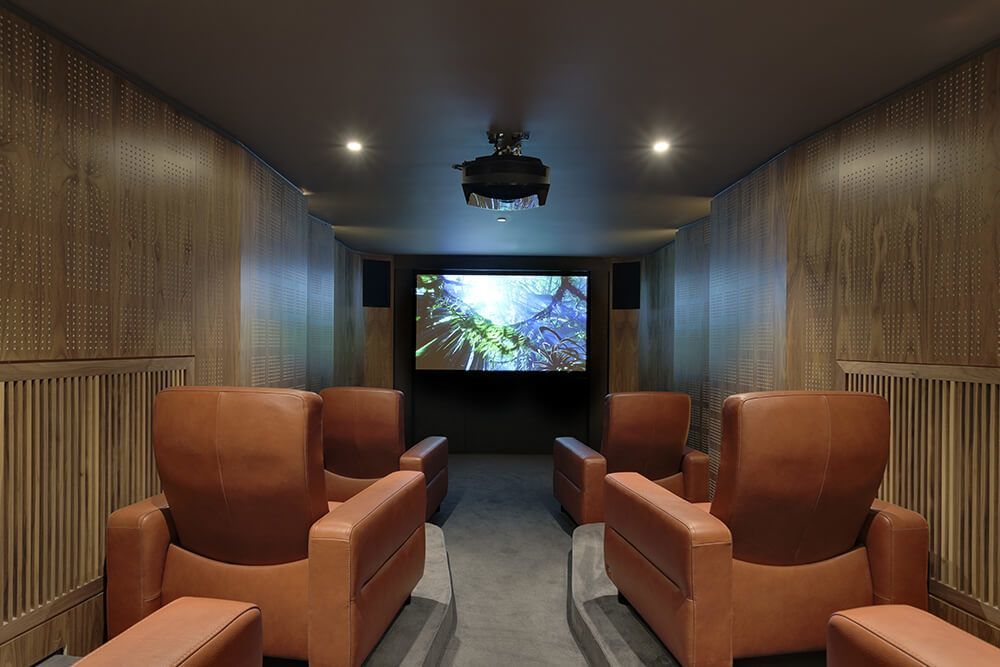HOME THEATRE: 8 TIPS TO CONSIDER BEFORE BUILDING ONE

By Michael Jumba
Life before the Coronavirus COVID-19 was going on normally. Everyone was going about their business with minimal interruptions. This however changed in December 2019 when the first cases of community spread of COVID-19 emerged in Wuhan City in China. Everyday life began being interrupted. From how we go to work, school, watch TV, movies, film, even how we worship. To reduce community spread of the disease, the international organization in charge of ensuring public health and safety (WHO) released guidelines aimed at mitigating the spread of the disease and which to date have become the new normal way of life.
Besides washing hands often, avoiding the touching of your face, maintaining physical distance and sanitizing, staying at home is being widely advocated as the best way to keep the virus from spreading in the community. While this stay-at-home advice is seen as torture by most individuals who used to go out to have fun over the weekend at the movie theatres, it seems it goes down well with the idea of having a movie theatre at home.
Individuals are usually accustomed to going out over the weekends to watch movies or a new film in theatres. However, since this is not possible at the moment because of COVID-19 disease, having a home theatre is not a bad idea. After all who knows when the pandemic will end?
So what is a home theatre?
According to the Merriam Webster English Dictionary, a home theatre is an entertainment system for the home that usually consists of a large television with video components (such as a DVD player and VCR) and an audio system offering surround sound.
In another definition from the Lifewire, a home theatre encompasses audio and visual equipment set-up in a home and which emulates the conventional movie theatre experience.
Taking the above definitions into consideration, Jumbo Crafts Ltd defines home theatres as a room that is purposefully dedicated for and encompasses audio-visual equipment and comfortable seating apparatus that brings the conventional public movie theatre experience to the home environment.
Contrary to conventional thought, home theatres are not necessarily expensive. Typically, they consist of simple equipment such as a 55 inch TV or a cheap projector, that is then combined with a DVD player with stereo home theatre speakers or subwoofers. With the emergence of internet streaming services such as Netflix, providing internet access has also become a necessity in home theatres.
Before implementing your home theatre project, it's important to note that home theatres come in different shapes, sizes, styles and budgets to suit every client. However, budget as a factor carries the greatest weight regarding how the end product will look like.
There are various factors to consider when planning to have a home theatre. They include budget, size of the theatre room, audio-visual equipment, theatre design, formalizing the design concept, installing interior decor products and testing and launching the home theatre.
- Budget
Under this factor, the client decides what they want to spend on their home theatre. The client ought to divide their budget into three main areas namely, audio-visual equipment, decor and chairs. For example, if the client's objective is to have an amazing looking home theatre, then a substantial amount of their budget should be reserved for interior design and decor.
- Dimensions (measure the size of your home theatre)
For the interior designer to be able to calculate the materials that will go into making a home theatre, the exact measurements of the room must be taken. These measurements will be useful when calculating the number of chairs that will be installed in the theatre among other interior decor elements such as 3D wall panels and soundproofing.
- Audio-Visual equipment
Audio-Visual equipment are at the centre of any theatre experience whether home or public. They enable the eye to see what’s in the movie and the ear to hear what soundtrack is playing. It is important to note that a larger room will require a larger screen while the opposite applies to a smaller room.
With regards to sound, you may require surround speakers that are either installed in-wall or are fixed strategically around the room to enhance the surround sound experience.
- Theatre design
Questions asked at this step include does the client prefer a modern or traditional design? What will be the colour scheme for the project? Will the design use acoustic panels or use fabric? Will the home theatre be used solely for watching movies or will it include playing video games? Will you use wall-to-wall panels or floating panels?
- Formalize your design concept
This stage involves developing floor plans, elevations, chair layout, sightline study, construction drawings, electrical layout, bill of quantities (BQ) using a Computer-Aided Design (CAD) program.
- Actual construction & installations
Having procured all the required materials, construction works and installations begin and continue till completion. Construction begins with rough works such as raising platforms, electrical works and lighting including soundproofing the walls.
- Interior installations
At this step, install the theatre decor products such as carpets, mouldings, columns, acoustic panels, chairs among others.
- Testing the theatre and launch
At this stage, the interior design team tests the audio-visual equipment for performance before handing the finished project to the client for launch.
Contact Jumbo Crafts Ltd for all your home theatre design needs.
Download the article here



